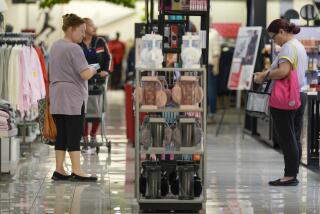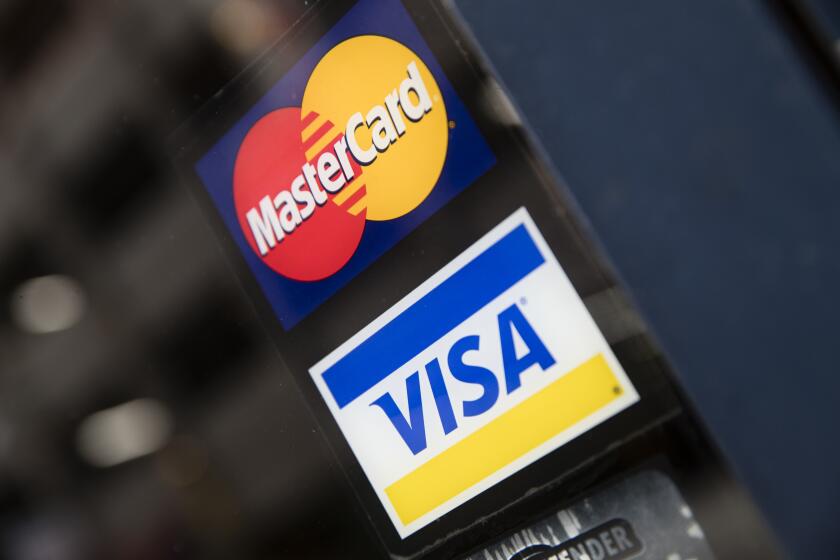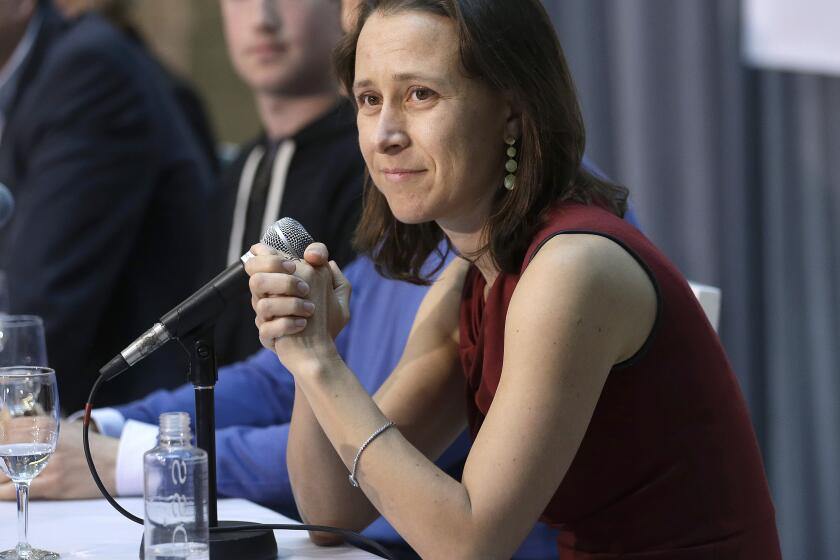Gas prices’ jump attests to upbeat economy
- Share via
Reporting from Washington — Beyond tensions over Iran and refinery problems, the recent jump in gasoline prices stems partly from an encouraging sign: The economy is improving.
The demand for crude oil has risen as the recovery from the severe global recession has picked up steam in the U.S. and abroad. That, in turn, has helped fuel higher prices at the pump, economists and industry analysts said.
“A lot of what drives prices is projection of future demand,” said Carl A. Larry, president of Oil Outlooks and Opinions, a research and consulting firm.
The U.S. recovery has solidified through the fall and so far this year, as shown by strong job reports and last week’s news of 1.1% increase in retail sales in February.
With a more solid footing, the economy should be able to withstand the recent increase in gas prices better than it did during a similar surge last year, said Kathy Bostjancic, director for macroeconomic analysis at the Conference Board.
“It’s a head wind for the consumer, but it doesn’t derail the recovery. It can be taken in stride, especially if the underlying fundamentals of the economy are improving, which they are,” she said.
“The dominant factor is really the improvement of the labor market,” she said, “and if that continues, that trumps all the potential head winds for the consumer.”
This week, however, Federal Reserve Chairman Ben S. Bernanke warned that rising gas prices could lead consumers to cut back on other expenditures, choking off the spending that has helped fuel stronger growth in recent months.
“I think higher energy prices would probably slow growth, at least in the short run,” Bernanke told a House committee Wednesday.
Derrick Barnes feels the pain at the pump.
“It’s ridiculous,” he said this week about the $4.07 a gallon for regular at a gas station in Crystal City, Va.
The owner of a car service, Barnes has passed along the added cost to customers, suffering a 25% drop in business in recent weeks as would-be fares took less-expensive public transportation to the airport. The Washington, D.C., resident said the sharply higher gas prices have caused him to cut back on his own purchases.
“I spend less on going out, on shopping,” he said as he finished pumping $70 worth of gas into his Lincoln MKT sport utility vehicle. “It’s a crunch.”
Mark Zandi, chief economist at Moody’s Analytics, called rising gas prices “the most serious immediate threat to consumer confidence and the broader economy.”
“Even if oil prices stay where they are today, gasoline prices are going to rise to a new record high in late April or early May,” he said. “That takes a real bite out of household pocketbooks.”
Evidence of the effect came in last week’s government report that consumer prices jumped 0.4% in February, the biggest gain since last spring, largely because of increased gas prices. A private report said consumer confidence fell in March for the first time in six months.
Surging gas prices also pose a political threat to President Obama, even though, as analysts pointed out, the White House can do little in the short term to affect what Americans pay to fill their gas tanks.
Two recent national polls showed Obama’s job approval down sharply despite the improving economy, in part because of concerns over higher energy costs.
Obama has been fighting back. Over the weekend, he reiterated his call for an end to $4 billion in tax breaks for the oil and gas industry. And he spent Wednesday and Thursday traveling to Nevada, New Mexico, Oklahoma and Ohio to highlight his efforts to expand domestic energy production while reducing U.S. dependency on oil.
A year ago, rising gas prices, combined with broader supply chain disruptions caused by the Japanese earthquake and tsunami, helped stall the recovery.
Unrest during the Arab Spring uprisings in the Middle East and North Africa also sparked price increases at that time. The Obama administration even took the unusual step of releasing 30 million barrels of oil from the Strategic Petroleum Reserve, in conjunction with releases by other nations, to offset the global supply loss from Libya and elsewhere in the region.
When that move was announced in June, gasoline prices already had started dropping from the early-May high of $3.97 a gallon. But consumer confidence didn’t bottom out until last summer, amid the European debt crisis and the bitter debate over raising the U.S. debt ceiling.
The rising prices are, in part, about getting back to a normal level as demand for gasoline and other petroleum products increases from the lows of the severe recession, researcher Larry said.
Demand in the U.S. remains at about 18.7 million barrels a day, well below the pre-recession high of 20 million. But growth in emerging nations such as China has more than made up the difference.
Worldwide demand for oil has risen to 89.1 million barrels a day last year from 85.6 million in 2009, with a projected rise to 89.9 million this year, according to the International Energy Agency.
“The output of oil in the world is near a record high, and the demand for oil globally is near a record high,” Larry said. “This is what happens when economies grow.”
After hitting a peak of $4.11 a gallon in mid-2008, the nationwide average price of regular gasoline dropped sharply as the deep recession took hold. It plummeted by the end of that year to $1.61, the lowest since 2004, according to the Energy Department. And prices have been rising fairly consistently since then, with occasional spikes.
“If you want to have a growing economy, that’s going to put more pressure on oil prices and so on,” Bernanke told senators recently.
Chris Rupkey, chief financial economist at Bank of Tokyo-Mitsubishi in New York, said it’s not time for panic over gas prices. He doesn’t see a repeat of last year’s economic slowdown.
“The momentum behind the economy this year — as opposed to last year, when gas prices spiked — is just tremendous,” he said. “In a way, gasoline prices going up, crude oil prices going up — it’s a pretty good leading indicator that the economic outlook has improved.”
More to Read
Inside the business of entertainment
The Wide Shot brings you news, analysis and insights on everything from streaming wars to production — and what it all means for the future.
You may occasionally receive promotional content from the Los Angeles Times.











